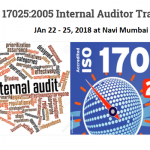How to effectively compliance with clause 5.3-accommodation and environment conditions of ISO 17025 standard
Laboratory facilities for testing and /or calibration including but not limited to energy sources, lighting and environmental conditions, shall be such as to facilitate correct performance of the tests and/or calibrations.
The laboratory shall ensure that the environmental conditions do not invalidate the results or adversely affect the required quality of any measurement. Particularly care shall be taken when sampling and test and/or calibrations are undertaken at sites other that a permanent laboratory facility. The technical requirements for accommodation and environmental conditions that can affect the results of tests and calibrations shall be documented.
The laboratory should monitor, control and record environmental conditions as required by the relevant specifications, methods and procedures or where they influence the quality of the results. Due attention shall be paid , for example ,to biological sterility, dust electromagnetic disturbances , radiation , humidity , electrical supply , temperature , and sound and vibration levels as appropriate to the technical activities concerned. Tests and calibrations should be stopped when the environmental conditions jeopardise the results of the tests and/or calibrations.
There should be effective separation between neighbouring areas in which there are incompatible activities. Measures should be taken to prevent cross-contamination.
Access to and use of areas affecting the quality of the tests and /or calibration should be controlled. The laboratories determine the extent of control based on its particular circumstances.
Measures should be taken to ensure good housekeeping in the laboratory. Special procedures prepare where necessary.
The test facility should be of suitable size, construction and location to meet the requirements of the testing and to minimise disturbance that would interfere with the quality of the testing/calibration.
The design of the test/calibration facility should be provide an adequate degree of separation of the different activities to assure the proper conduct of each test/calibration activities.
TEST SYSTEM FACILITIES:
The test facility should have a sufficient number of rooms or areas to assure the isolation of test systems and the isolation of individual projects, involving substances or organisms known to be or suspected of being bio hazardous.
There should be storage rooms or areas as needed for supplies and equipment. Storage rooms or areas should be separated from rooms or areas housing the test/calibration systems and should provide adequate protection against infestation, contamination and/or deterioration.
FACILITIES FOR HANDLING TEST AND REFERENCE ITEMS:
To prevent contamination or mix-ups, there should be separate rooms or areas for receipt and storage of the test and reference items, and mixing of the test items with the vehicle.
Storage rooms or areas for the test /calibration items should be separate from rooms or areas containing the test systems. They should be adequate to preserve identity, concentration, purity and stability, and ensure safe storage for hazardous substances.
ARCHIVE FACILITIES:
Archive facilities should be provided for the secure storage and retrieval of testing and/or calibration plans, raw data, final reports, samples of test and/or calibration items and specimens. Archive design and archive conditions should protect contents from untimely deterioration.
WASTE DISPOSAL:
Handling and disposal of wasters should be carried out in such a way as not to jeopardise the integrity of tests and/or calibration. This includes provision for appropriate collection, storage and disposal facilities and decontamination






